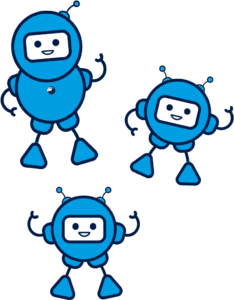Between the jargon and the technical nature of the field, terminology about automation gets complicated in a hurry. What’s more, technology is constantly evolving, which means new features and ideas are also constantly being added to the lexicon. Whether you’re researching automation or just brushing up on your vernacular, if you’ve ever Googled an acronym, today’s blog post is for you. Join us as we break down some of our industry’s common terms and their definitions in our new Automation Terminology Glossary.
Automation Terminology Glossary
- AI, Artificial Intelligence: As a general term, AI refers to the ability of machines to perform tasks intelligently, the way humans do. As a discipline, it refers to a field of computer science that leverages machines and software to perform such tasks.
- Bots: Colloquial term for computer programs that carry out designated tasks for RPA.
- Attended Bots: Computer programs designed to work with the human workforce, requiring ongoing interactions between the human and digital workforces.
- Unattended Bots: Computer programs designed to work autonomously, completing rule-based tasks without human management.
- BPM, Business Process Automation: A holistic approach to process optimization that focuses on constant and ongoing improvement.
- CoE, Center of Excellence: A team or entity dedicated to overseeing the success of a specific focus area (e.g., bot deployment) by providing leadership, best practices and support.
- Decision Management Suite (DMS): A supplemental suite of tools for when a business application includes complicated decisions or frequently changing logic.
- EA, Enterprise Architecture: A well-defined practice for enterprise analysis, design, planning, and implementation that uses a comprehensive approach for success.
- iBPMS, Intelligent Business Process Management Suite: A suite of tools to improve traditional business process management by enriching it with AI.
- iPaaS, Integration Platform as a Service: Integrative cloud services for connecting on-premises and cloud-based processes, services, applications, and data.
- LCAP, Low-code Application platforms: Application platforms designed for rapid development and deployment through the use of graphical user interfaces.
- ML, Machine Learning: A subset of artificial intelligence, machine learning is the study of algorithms that improve automatically through experience only.
- NLG, Natural Language Generation: A machine learning method that automatically transforms data into written narratives that mimic human writing.
- NLP, Natural Language Processing: A machine learning method for the automatic manipulation of a natural language like speech and text that imitates naturally flowing sentences, giving human-to-machine interactions a more personal touch.
- OCR, Optical Character Recognition: A machine learning method for extracting text from images. These can include any images, including those in textbooks, graffiti, license plates, signs, and more.
- Rule-based System: A system that applies specific rules to run the desired action.
- RPA, Robotic Process Automation: Technology designed to perform automated, repetitive, and predefined business tasks.
- SaaS, Software as a Service: Software that is built, designed, and centrally hosted by a provider and used remotely by a user; such licensed use is typically provided to users on a subscription basis.
If you have any questions about these terms, or want to learn more about how to get started with automation, the EPSoft team is here to help. Reach out to schedule a free consultation.


